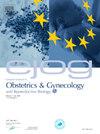利用贡珀兹模型通过胎儿生物测量准确预测出生体重
IF 1.5
Q3 OBSTETRICS & GYNECOLOGY
European Journal of Obstetrics and Gynecology and Reproductive Biology: X
Pub Date : 2024-10-03
DOI:10.1016/j.eurox.2024.100344
引用次数: 0
摘要
目的监测胎儿生长和估计出生体重具有重要的临床意义。孕期超声胎儿生物测量值包括股骨长、头围、腹围、双顶径等,用于将胎儿置于 "生长曲线图 "上。目前还没有一个简单的基于生长模型的胎儿生物测量预测公式。研究设计我们的队列("Seethapathy 队列")由 2015-2017 年印度钦奈 774 名孕妇的超声生物测量数据和其他数据组成。我们使用 Gompertz 模型来模拟胎儿生物测量值的增长,该模型是受限增长的标准模型,仅有三个直观参数,并使用在这些参数基础上训练的机器学习 (ML) 模型来预测出生体重 (BW)。两个 Gompertz 参数-t0(拐点时间)和 c(生长率下降率)似乎对所有胎儿都适用,而第三个参数 A 则是每个胎儿特有的总体尺度,可捕捉个体差异。在 Seethapathy 的队列中,我们可以根据 24 周或 35 周前的超声波数据推断出每个胎儿的 A。我们的 ML 模型预测出生体重的误差为 8%,优于已发表的可获取晚期超声数据的方法。结论 Gompertz 模型适合胎儿生物测量生长,无需晚期超声检查即可估算出生体重。除了其临床预测价值外,我们还建议将其用于未来的生长标准,几乎所有的变化都可以用单一的标度参数 A 来描述。本文章由计算机程序翻译,如有差异,请以英文原文为准。
Accurate birth weight prediction from fetal biometry using the Gompertz model
Objectives
Monitoring of fetal growth and estimation of birth weight is of clinical importance. During pregnancy, ultrasound fetal biometry values including femur length, head circumference, abdominal circumference, biparietal diameter are measured and used to place fetuses on “growth charts”. There is no simple growth-model-based, predictive formula in use for fetal biometry. Estimation of fetal weight at birth currently depends on ultrasound data taken a short time before birth.
Study design
Our cohort (“Seethapathy cohort”) consists of ultrasound biometry measurements and other data for 774 pregnant women in Chennai, India, 2015–2017. We use the Gompertz model, a standard model for constrained growth, with just three intuitive parameters, to model the growth of fetal biometry, and a machine learning (ML) model trained on these parameters to predict birth weight (BW).
Results
The Gompertz model convincingly fits the growth of fetal biometry values. Two Gompertz parameters— (inflection time) and (rate of decrease of growth rate)—seem universal to all fetuses, while the third, , is an overall scale specific to each fetus, capturing individual variation. On the Seethapathy cohort we can infer for each fetus from ultrasound data available by the 24 or 35 weeks. Our ML model predicts birth weight with < 8 % error, outperforming published methods that have access to late-term ultrasound data. The same model gives an 8.4 % error in BW prediction on an independent validation cohort of 365 women.
Conclusions
The Gompertz model fits fetal biometry growth and enables birth weight estimation without need of late-term ultrasounds. Aside from its clinical predictive value, we suggest its use for future growth standards, with almost all variation described by a single scale parameter .
求助全文
通过发布文献求助,成功后即可免费获取论文全文。
去求助
来源期刊

European Journal of Obstetrics and Gynecology and Reproductive Biology: X
Medicine-Obstetrics and Gynecology
CiteScore
2.20
自引率
0.00%
发文量
31
审稿时长
58 days
 求助内容:
求助内容: 应助结果提醒方式:
应助结果提醒方式:


